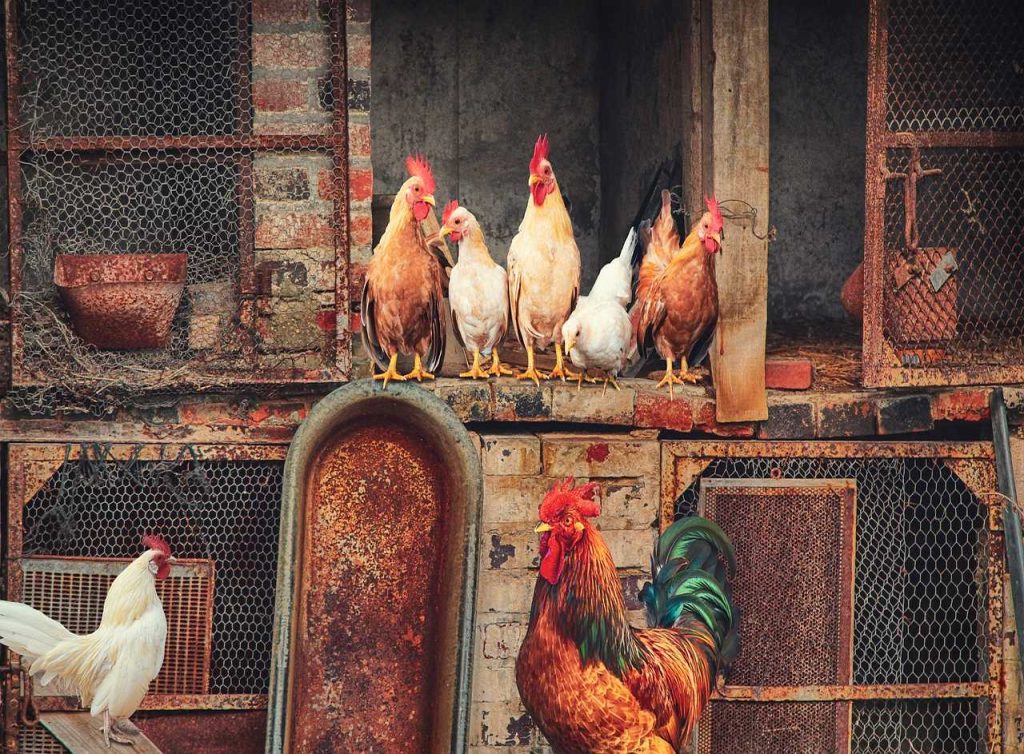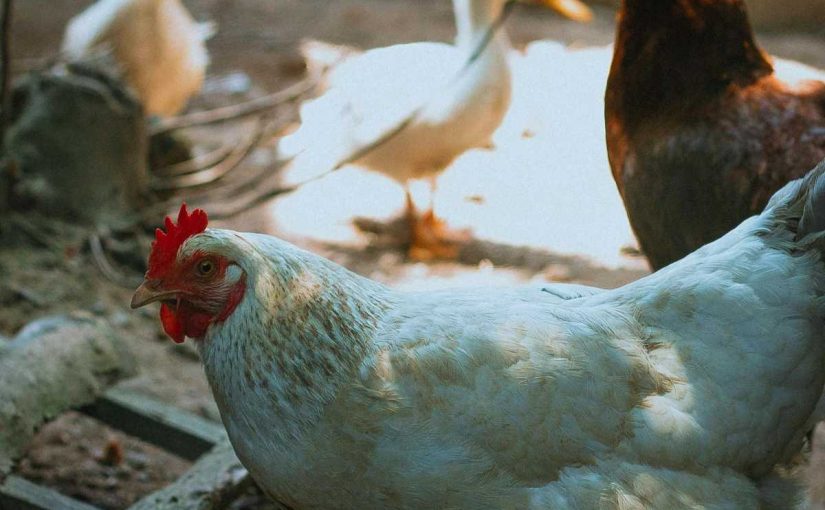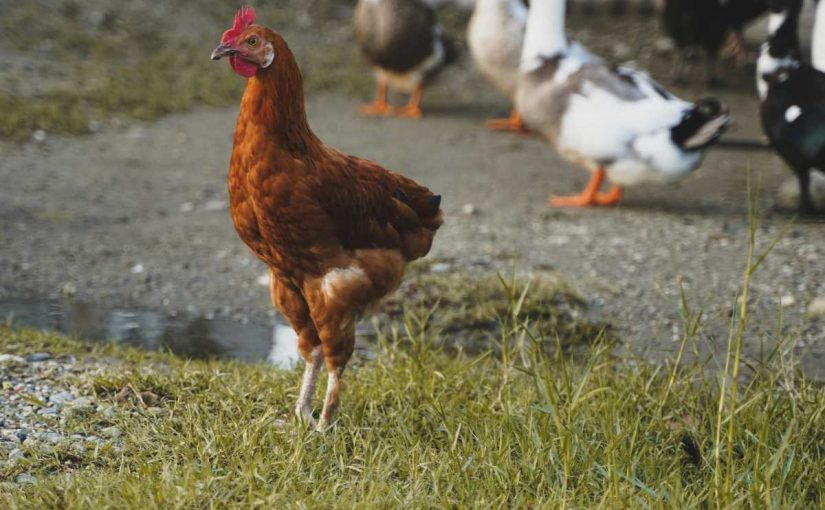Chicken coop ventilation is a crucial aspect of poultry management that ensures a healthy living environment for your flock. Proper ventilation involves allowing fresh air to circulate within the coop while simultaneously expelling stale air, moisture, and harmful gases like ammonia.
Chickens produce moisture through respiration and droppings, leading to increased humidity levels if not adequately managed. Without proper ventilation, this can result in respiratory problems, heat stress, and the proliferation of harmful bacteria, ultimately impacting the health and productivity of your chickens.
In this blog, we’ll explore the importance of chicken coop ventilation and five effective methods to ensure your coop remains well-ventilated throughout the year.

Why is Ventilation Important?
Before diving into the practical methods of ventilation, it’s essential to understand why it matters:
- Respiratory Health: Chickens are susceptible to respiratory diseases, and poor ventilation can lead to a buildup of ammonia and other harmful gases. Proper ventilation reduces these risks, promoting better overall health.
- Humidity Control: Excess moisture can create a breeding ground for pathogens and mold, which can negatively affect your flock. Good airflow helps maintain optimal humidity levels, preventing issues such as respiratory infections and footpad dermatitis.
- Temperature Regulation: During hot summer months, chickens can suffer from heat stress, which affects their appetite, egg production, and overall health. Ventilation helps regulate temperatures within the coop, keeping it cooler during the day.
- Odor Management: Adequate ventilation helps minimize unpleasant odors associated with chicken droppings, creating a more pleasant environment for both the chickens and their caretakers.
5 Ways to Utilize Chicken Coop Ventilation
Here are five effective methods for ensuring proper ventilation in your chicken coop:
1. Windows and Openings
Strategically Placed Windows
- Functionality: Installing windows in your coop can significantly enhance natural airflow. Positioning them high on the walls allows warm, moist air to escape while enabling fresh air to enter from lower openings.
- Screening: Use sturdy screens to keep pests and wild birds out while allowing fresh air in. Ensure windows can be opened and closed easily to adjust airflow according to the weather.
Adjustable Openings
- Flexibility: Create adjustable vents or openings that can be opened or closed based on environmental conditions. During hot summer days, keeping windows and vents open will promote airflow, while in winter, you might want to reduce openings to conserve heat.
- Types of Vents: Consider using louvered vents or sliding windows that can easily be modified as conditions change, providing you with full control over the ventilation.
2. Roof Ventilation
Ventilation Caps
- Purpose: Installing ventilation caps or ridge vents on the roof allows hot air to rise and escape. These vents should be designed to prevent rain from entering the coop while promoting sufficient airflow.
- Types of Roof Vents: You can choose from static vents, turbine vents, or even powered exhaust vents depending on your coop design and local climate.
Overhangs
- Design Considerations: Roof overhangs not only add style to your coop but also protect windows and vents from rain and snow, ensuring that air can circulate freely without letting moisture in.
- Weather Protection: This design helps maintain airflow while providing shelter for chickens during inclement weather, allowing them to stay dry and comfortable.
3. Fans and Air Circulation Devices
Exhaust Fans
- Benefits of Exhaust Fans: Installing exhaust fans in the coop can help actively draw out stale air, particularly on hot days. Exhaust fans can be connected to a thermostat, automatically turning on when temperatures rise above a certain point.
- Power Considerations: Choose energy-efficient models to minimize electricity costs, especially if you plan to run them for extended periods during peak summer heat.
Ceiling Fans
- Enhancing Airflow: If your coop has sufficient height, consider installing ceiling fans. These fans can help circulate air evenly throughout the coop without creating uncomfortable drafts.
- Durability: Ensure that the ceiling fans are suitable for outdoor use to withstand humidity and potential dust exposure in the coop environment.
4. Cross Ventilation

Opposing Vents
- Encouraging Cross Breezes: Creating opposing vents on either side of the coop promotes cross ventilation, allowing fresh air to flow through one vent and push stale air out through the other. This method is especially effective on windy days.
- Placement Tips: Position vents to take advantage of prevailing winds, and consider using adjustable flaps to control airflow direction during varying weather conditions.
Wind Direction Awareness
- Maximizing Natural Airflow: Understanding the prevailing wind direction in your area can help you design your coop for optimal airflow. Positioning vents in alignment with the wind can significantly improve the effectiveness of your ventilation system.
- Seasonal Adjustments: Adjust the positioning of movable vents or openings based on seasonal wind patterns to ensure your chickens get the best airflow throughout the year.
5. Seasonal Adjustments
Flexible Ventilation Strategies
- Adapting to Weather Changes: Different seasons require different ventilation strategies. In winter, reducing airflow is important to retain heat, while in summer, increased ventilation is vital to keep the coop cool.
- Insulation and Vent Covers: Use insulated covers for vents during colder months to minimize heat loss while still allowing for some degree of airflow. This can help maintain a comfortable environment without excessive cold drafts.
Monitoring Conditions
- Regular Observations: Regularly monitor the temperature and humidity inside the coop using thermometers and hygrometers. This will help you understand when to adjust your ventilation system to keep conditions optimal for your flock.
- Be Prepared for Weather Changes: Be ready to adjust your ventilation strategy during unexpected weather changes, such as sudden temperature drops or heatwaves, to protect your chickens’ health.
Conclusion
Effective chicken coop ventilation is essential for maintaining a healthy and comfortable environment for your flock. By utilizing windows and openings, roof ventilation, fans, cross ventilation, and seasonal adjustments, you can create a dynamic airflow system that benefits your chickens year-round.
Ensuring proper ventilation not only improves the health and productivity of your chickens but also makes chicken-keeping a more enjoyable experience. By taking the time to invest in your coop’s ventilation, you can create a safe, healthy, and thriving environment for your feathered friends.



